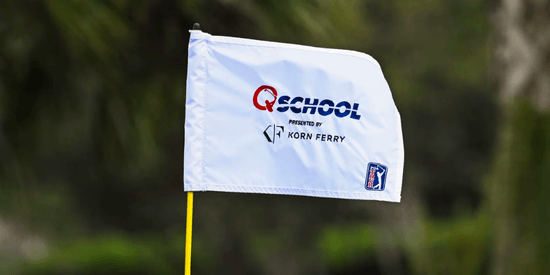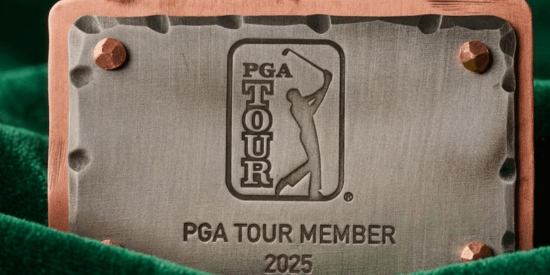'Equitable and fair:' Rules changes well-received among amateurs
By Shawn Allen
The 2019 golf season brought many changes to the USGA Rules of Golf as 34 rules were consolidated to 24. The response to those changes was perhaps loudest in the professional game. We witnessed Rickie Fowler’s commentary on the new drop rule, Justin Thomas’ tiff with the alignment rule and Bryson’s experimentations with flagstick materials.
At the amateur level, the response was more subdued – you might call it more of a knowing acceptance. One reason, according to Darin Green, the Florida State Golf Association’s Director of Rules and Competitions, is that “the rules changes reflect how the golf is played at the recreational level.”
Three changes to the rules stood out as having the largest effect on the amateur game.
Leaving the flagstick in while putting (Rule 13.2a) might be the most utilized rule per round. While many players still prefer to have the flagstick out in a recreational round or when hitting a long putt, leaving the flagstick in allows players to line up putts and fix marks on the green when they traditionally would be tending to another player’s putt.
Green admits he doesn’t have a personal preference regarding this new rule.
“I am one of those, I don’t care if it’s in or it’s out.”
Another commonly utilized rule that changed this year is drop procedure, covered by Rule 14.3. At some point in a round, be it for free relief or at the cost of a penalty stroke, an amateur is likely to have reason to take a drop. The new procedure requires that it now be done from knee height as opposed to shoulder height.
“It is awkward,” Green noted, “but there are reasons behind it. And if you explain those reasons, it makes sense.”
The thinking is that a knee-high drop creates a consistent setup that maintains randomness in the drop but eliminates variables that would require multiple re-drops. Basically, it’s what golfers have always done when there isn’t a trophy (or pro shop credit) on the line.
Wording in Rule 13.1c(2) allows a player to remove sand and loose soil on the green and repair any kind of damage, including damage created by golf spikes. The change was met with all sorts of concerns that it would grind the pace of play to a halt. The fear was that players would fix any and every blemish in their line to the chagrin of players in their group and the group waiting in the fairway.
However, Nate McCoy, Iowa Golf Association Manager of Championships and Course Rating, thinks that being allowed to fix a blemish on the green can give a player the peace of mind to be able to make a put, which might even equal a net gain in time. Players will erase doubt and putt the ball instead of rereading or over-reading the putt.
“It takes away some of the uncertainty that used to be there when have to navigate a blemish in the green,” McCoy said. “As a player, if there is putt you are worried about, it’s generally one blemish that in the past you couldn’t fix.”
McCoy, by the way, knows the rules from a player’s standpoint, too, having played collegiately for Iowa State before playing professionally, being reinstated as an amateur and then qualifying for this summer’s U.S. Amateur.
For Ryan Farb, Director of Rules and Competition for the Northern California Golf Association, the rule allowing for improvements on putting greens is his personal favorite of all the changes.
“It’s nice to not worry about what we repair on the putting greens,” he said. “…I think it’s nice that it hasn’t had the negative impact on the pace of play that many in the rules world thought it was going to have.”
That’s not to say that the rules haven’t had some negative effects. McCoy said there was initial concern over the flagstick rule and when players should discuss their flagstick preferences for an ensuing round. Perhaps on the first tee or first green?
He humorously pointed out that traditionally, when the flagstick comes out and goes back in, it signals to players in the fairway that it is their turn to hit. Now, it just might mean a golfer on the green has a ticklish, downhill four-footer to save par.
McCoy also said that the new drop procedure can be awkward for people who think they have to drop it off to the side. For many golfers of a certain age, it may be a difficult position to get into. When told the ball can be dropped from any position, that awkwardness is easily assuaged.
Farb said that he hasn’t experienced any consistent issues with new rules. He referenced issues at the club level with local rule options, be it local rules regarding embedded balls or stroke-and-distance rules for a ball out of bounds. These are one-off issues that have not manifested in the game with any consistency.
At the recreational and club levels, and even at championship amateur levels, the rules changes had few negative effects. The USGA succeeded in streamlining its updates to align two of golf’s major demographics: the core fanbase and the general public.
Golf associations and businesses (from here on out known as big ‘G’ Golf) want to #growthegame, but they fear abandoning their most ardent patrons. Even the smallest changes in the game can cause a hullabaloo. We golfers don’t like change. In fact, we particularly love old things – persimmon-headed drivers, Golden Age architecture, the R&A (which, we should point out, stands for Royal & Ancient!).
As much as we love tradition, the rules changes were meant to align the game, and at the amateur level at least, it appears to have worked.
“The rules changes were equitable and fair,” McCoy said. “That’s keeping with the nature of the game.”
The emphasis of the rule changes were to modernize the game, and it was done by placing the integrity of the game on the individual player.
Golf has a tendency to feel stuffy – that a high bar must be met in order to play – from the dress code to cost of equipment to even the rules. So changing the rules to eliminate penalties for accidents and appealing to the better angels of each player creates a more welcoming environment, especially at the amateur level.
Despite all the perceived distress over the changes, the rules and their roll out have been largely positive, said McCoy. He cited the high turnouts at rules seminars.
“I’d like to applaud the USGA on how they handled everything with the rules,” McCoy said. “Can’t imagine making a change that affects the whole [golfing] world.”
The 2019 golf season brought many changes to the USGA Rules of Golf as 34 rules were consolidated to 24. The response to those changes was perhaps loudest in the professional game. We witnessed Rickie Fowler’s commentary on the new drop rule, Justin Thomas’ tiff with the alignment rule and Bryson’s experimentations with flagstick materials.
At the amateur level, the response was more subdued – you might call it more of a knowing acceptance. One reason, according to Darin Green, the Florida State Golf Association’s Director of Rules and Competitions, is that “the rules changes reflect how the golf is played at the recreational level.”
Three changes to the rules stood out as having the largest effect on the amateur game.
Green admits he doesn’t have a personal preference regarding this new rule.
“I am one of those, I don’t care if it’s in or it’s out.”
Another commonly utilized rule that changed this year is drop procedure, covered by Rule 14.3. At some point in a round, be it for free relief or at the cost of a penalty stroke, an amateur is likely to have reason to take a drop. The new procedure requires that it now be done from knee height as opposed to shoulder height.
“It is awkward,” Green noted, “but there are reasons behind it. And if you explain those reasons, it makes sense.”
The thinking is that a knee-high drop creates a consistent setup that maintains randomness in the drop but eliminates variables that would require multiple re-drops. Basically, it’s what golfers have always done when there isn’t a trophy (or pro shop credit) on the line.
Wording in Rule 13.1c(2) allows a player to remove sand and loose soil on the green and repair any kind of damage, including damage created by golf spikes. The change was met with all sorts of concerns that it would grind the pace of play to a halt. The fear was that players would fix any and every blemish in their line to the chagrin of players in their group and the group waiting in the fairway.
However, Nate McCoy, Iowa Golf Association Manager of Championships and Course Rating, thinks that being allowed to fix a blemish on the green can give a player the peace of mind to be able to make a put, which might even equal a net gain in time. Players will erase doubt and putt the ball instead of rereading or over-reading the putt.
“It takes away some of the uncertainty that used to be there when have to navigate a blemish in the green,” McCoy said. “As a player, if there is putt you are worried about, it’s generally one blemish that in the past you couldn’t fix.”
McCoy, by the way, knows the rules from a player’s standpoint, too, having played collegiately for Iowa State before playing professionally, being reinstated as an amateur and then qualifying for this summer’s U.S. Amateur.
For Ryan Farb, Director of Rules and Competition for the Northern California Golf Association, the rule allowing for improvements on putting greens is his personal favorite of all the changes.
“It’s nice to not worry about what we repair on the putting greens,” he said. “…I think it’s nice that it hasn’t had the negative impact on the pace of play that many in the rules world thought it was going to have.”
That’s not to say that the rules haven’t had some negative effects. McCoy said there was initial concern over the flagstick rule and when players should discuss their flagstick preferences for an ensuing round. Perhaps on the first tee or first green?
He humorously pointed out that traditionally, when the flagstick comes out and goes back in, it signals to players in the fairway that it is their turn to hit. Now, it just might mean a golfer on the green has a ticklish, downhill four-footer to save par.
McCoy also said that the new drop procedure can be awkward for people who think they have to drop it off to the side. For many golfers of a certain age, it may be a difficult position to get into. When told the ball can be dropped from any position, that awkwardness is easily assuaged.
Farb said that he hasn’t experienced any consistent issues with new rules. He referenced issues at the club level with local rule options, be it local rules regarding embedded balls or stroke-and-distance rules for a ball out of bounds. These are one-off issues that have not manifested in the game with any consistency.
Golf associations and businesses (from here on out known as big ‘G’ Golf) want to #growthegame, but they fear abandoning their most ardent patrons. Even the smallest changes in the game can cause a hullabaloo. We golfers don’t like change. In fact, we particularly love old things – persimmon-headed drivers, Golden Age architecture, the R&A (which, we should point out, stands for Royal & Ancient!).
As much as we love tradition, the rules changes were meant to align the game, and at the amateur level at least, it appears to have worked.
“The rules changes were equitable and fair,” McCoy said. “That’s keeping with the nature of the game.”
The emphasis of the rule changes were to modernize the game, and it was done by placing the integrity of the game on the individual player.
Golf has a tendency to feel stuffy – that a high bar must be met in order to play – from the dress code to cost of equipment to even the rules. So changing the rules to eliminate penalties for accidents and appealing to the better angels of each player creates a more welcoming environment, especially at the amateur level.
Despite all the perceived distress over the changes, the rules and their roll out have been largely positive, said McCoy. He cited the high turnouts at rules seminars.
“I’d like to applaud the USGA on how they handled everything with the rules,” McCoy said. “Can’t imagine making a change that affects the whole [golfing] world.”
Most Popular Articles

2025 PGA TOUR Q-School Guide: Sites, Scores, and Who Advanced
Dec 5, 2025Second Stage is complete and Final Stage awaits at Sawgrass — follow every Q-School leaderboard and the players still chasing
2025 LPGA TOUR Q-Series: Final Qualifying Stage FINAL SCORING
Dec 8, 2025Helen Briem earns medalist honors, 31 players headed to the LPGA next year
2025 PGA TOUR Q-School Final Stage: Ewart Leads Five New TOUR Card Winners
Dec 14, 2025A.J. Ewart topped Final Stage at TPC Sawgrass, leading five players who secured PGA TOUR membership for 2026.
Australian Open at Royal Melbourne: Preview, amateur bios, and how to watch
Nov 30, 2025Rory McIlroy headlines one of the championship's top fields in years - at least four amateurs will have their chance at gloryInside Gil Hanse’s Restoration of Baltusrol’s Upper Course: A Return to Tillinghast’s
Dec 11, 2025Renowned architect Gil Hanse reveals how he brought Baltusrol’s Upper Course back to life by honoring A.W. Tillinghast’s originalLoading latest news...

